Table of contents
Birch leaves and birch blossoms are suitable raw (and preferably in organic quality) as an ingredient in salads. They are also often used in doughs, patties and, of course, in tea preparations.
Use in the kitchen
The flowers and leaves as well as the buds, fruits and stem juice of the silver birch ( Betula pendula) can be used raw and in the kitchen.
The young birch leaves are a neutral-tasting addition to bread, vegan patties, sauces and herb mixtures. The raw leaves are an enrichment for raw salads, for example together with dandelion, garden cress and lamb's lettuce. Birch leaves can be pickled in a similar way to sauerkraut and are suitable for making fresh plant juices and for cold or hot vital drinks, such as tea. 1,2
Can you eat birch blossoms and what are the uses for birch blossoms? The male, elongated, yellow birch blossoms (birch catkins) are edible. You can add them to bread dough, patties, raw breads and soups as a flavoring ingredient, or you can candied them. As a seasoning, they enhanceherbal vinegar, herbal oil and wild plant salt - or you can use them in a similar way to a chutney. Birch buds taste deliciously nutty in your morning muesli or in a salad.
The young and still soft birch fruits - these are small, winged nuts with a slightly aromatic taste 5 - make a delicious treat when candied or dipped in chocolate. They are used in tea, punch or wild plant lemonade. They are a good ingredient in patties and vegetable soups and are suitable as a topping for briefly fried or pickled vegetables.
The watery, sweet birch trunk sap can be processed into beer, spirits, wine or vinegar due to its high sugar content. The vitalising mineral drink can be drunk fresh or thickened into a syrup. Underneath the black-white bark there is a delicate layer of bark that can be used as flour for various baked goods. 2
Vegan recipe for birch blossom sauce
Ingredients: 100 ml vegetable stock, 2 tbsp birch blossoms (raw, organic), 1 tbsp apple syrup, 200 g sour cream (vegan), 1 tbsp cornstarch, a little salt.
Preparation: Heat the vegetable stock, add the birch blossoms and apple syrup and allow to cool. Stir in the vegan sour cream and puree with a hand blender to form a sauce. Mix 4-5 tablespoons of the sauce with cornstarch and add back to the rest of the sauce. Heat, stirring constantly, until the sauce thickens. Season with salt and enjoy with boiled potatoes or vegetables.
Tea preparation
To prepare a birch leaf tea, which is used for dehydration, pour 2 heaped teaspoons of birch leaves with 250 ml of boiling water and strain after 10 minutes. Drink 3 cups of the infusion per day, moderately warm. Once the dehydration is successful, the tea must be discontinued. 1
Vegan recipes with birch leaves or birch blossoms can be found under the note: " Recipes that have the most of this ingredient ".
| Not only vegans or vegetarians should read this: Vegans often eat unhealthily. Avoidable nutritional errors. |
Purchasing - Storage
Fresh birch blossoms and birch leaves are not available in any supermarket (e.g. Coop, Migros, Denner, Volg, Spar, Aldi, Lidl, Rewe, Edeka, Hofer, Billa) or organic supermarket (e.g. Denn's Biomarkt, Alnatura). However, dried birch leaves are often found as an ingredient in bladder and kidney teas, gout and rheumatism teas and so-called detox teas. Herbal tea blends with birch leaves are available in the supermarkets Coop (Vitality), Migros, Edeka and Rewe, in the organic supermarket Alnatura, in health food stores, in pharmacies and online.
In addition to dry extracts, e.g. in the form of tablets, you can also buy alcoholic extracts in juices. Fresh plant juice is available in its purest form and in various combinations. 3,4
Found in the wild
The silver birch ( Betula pendula) is a deciduous tree that grows mainly in the temperate climate zone, especially in Eurasia and North America (from Alaska to Canada). 16 In Switzerland, this species can be found in forests, peat bogs and on shore areas at collin-subalpine altitudes. 22
What does a birch look like? Depending on the climate zone, the tree can reach a height of 9-25 meters. It has a characteristic silvery-white bark. The white color is due to the substance betulin. The leaves are diamond-shaped to triangular, long, pointed and doubly toothed. The silver birch has drooping branches that are covered with warty resin glands when young. Male inflorescences (birch blossoms) are about 10 cm long, cylindrical (catkins), drooping and yellow-green, later light brown in color. The female birch blossom is 2-4 cm long, upright when the birch is in bloom and later droops. Birch fruits are single-seeded, thin-skinned nuts (about 3 mm) each with 2 almost transparent wings that are twice as wide as the birch fruit. 1, 5,6,7,22,24
In Central Europe, the silver birch is considered an important pioneer tree species on fallow land, clear-cuts, dumps, rubble and gravel areas. Silver birch can also be found on burned areas and reforestation areas. They prepare the forest soil, ie they prepare areas for other tree species. 7,23,24
Season: The flowering period of the silver birch is from April to May. 22 When can you collect birch leaves? Young leaves can be collected in May and June. 1 The fruits of the birch ripen from July to September. 24
To obtain birch sap (bleeding sap), the bark is cut in spring (March to April) or holes are drilled into the trunk to collect the sap that flows out in metal containers. Depending on the weather and temperature, the birch sap flows for about 10 days at a rate of 1-5 liters per day. Birch tar is obtained from the birch bark, which is peeled and dried from the trunk, older branches and twigs in spring (March to May) by what is known as dry distillation. 1 However, the tree can suffer serious damage from the bark injury. 2
Storage tips
Fresh birch leaves and flowers should be left to dry in an airy, dark place. Dried plant parts can be stored in a cool, dry place, protected from light. Dark, well-sealable jars or metal containers are ideal for this.
To prevent fermentation of the fresh plant juice or the stock juice, you can store the liquids in the refrigerator or freeze them in small portions. An alternative is to preserve them with alcohol. Depending on the percentage, you use 30-50% alcohol and mix it with the pressed juice or stock juice.
Ingredients - Nutritional values - Calories
Birch leaves contain minerals such as magnesium, potassium, calcium and trace elements such as manganese, iron and zinc. The leaves also contain vitamin C. 1, 11,12
The stem juice contains salts, invert sugar, proteins, organic acids and plant growth substances. 1
The complete ingredients of birch leaves and birch blossoms, the coverage of the daily requirement and comparison values with other ingredients can be found in our nutrient tables. In the article Nutrients explained you will get a detailed insight into the topic.
Health effects
Plant parts of the silver birch ( Betula pendula) have various pharmaceutical properties, such as antimicrobial, antioxidant, antigenotoxic and anticancer effects. In addition, the leaf extracts of Betula pendula are often used to treat rheumatoid arthritis or osteoarthritis. 11,17
The health effects of birch raw materials are not only due to the secondary plant substances they contain. Scientists suspect that, for example, the high vitamin C content and the essential oil of the birch also support the increase in chloride and urea excretion. The increased urine excretion prevents the formation of kidney stones and kidney gravel. 3
Another proven effect of birch leaf extracts is the inhibition of biofilm formation by Escherichia coli bacteria. 3
Secondary plant substances
Many of the health effects of birch products can be attributed to the secondary plant substances they contain. Our article on secondary plant substances provides an overview of the classification of substance groups, their occurrence in foods and possible effects on humans. Parts of the birch plant (mainly birch leaves) contain the following secondary plant substances, among others: 1,2,3,8,9,10,11,20,25,26
Isoprenoids: terpenes (betulin, betulinic acid, lupeol, oleanolic acid), saponins
Polyphenols: flavonoids (hyperoside, quercetin, sakuranetin, apigenin, acacetin, myricetin, kaempferol, catechins), phenolic acids (hydroxybenzoic acid, ferulic acid, p-coumaric acid), tannins (also called tannins), phytoestrogens (lignans), procyanidins, diarylheptanoids
However, it should be noted that the composition of secondary plant substances in birch products can vary depending on the variety, time of harvest and growing conditions. Therefore, quantities are only of limited use and should only be understood roughly.
The triterpenes (betulin, betulinic acid, oleanolic acid and lupeol) contained in high quantities in birch bark have been shown to have pharmacological activities such as anti-inflammatory, anti-cancer and antiviral properties. 10 Betulins have been playing a promising role in cancer and HIV research for several years. 12
The antioxidant activity of birch can be attributed, among other things, to the content of phenolic compounds. 13
A 2022 study investigated the antimicrobial effect of birch bark extracts on common skin bacteria that can cause dermatological diseases. The results showed successful growth inhibition of Gram-positive bacteria involved in skin diseases such as acne (such as Cutibacterium acnes, Staphylococcus epidermidis) by birch bark extracts. The researchers also found that birch extracts improved wound healing. Triterpenes such as betulin could be responsible for the accelerated wound closure. The researchers associate the antibacterial effect with the content of procyanidins - however, further studies are needed to confirm this assumption. The phenolic compounds could also contribute to the antimicrobial activity. 13
Dangers - Intolerances - Side effects
The immune system of allergy sufferers can react strongly to birch pollen, as it contains highly potent allergens. When pollen is inhaled or comes into direct contact with it, the body releases histamine, which can lead to inflammation of the conjunctiva of the eyes and the nasal mucosa. This pollen allergy is colloquially known as "hay fever". Symptoms can include: itchy or watery eyes, itching in the nose, palate or ears, sneezing, a blocked or runny nose or difficulty breathing. 14
Cross-allergies can also occur, for example with birch pollen allergy with celery, hazelnuts, roses ( apple, peach, pear, almond, plum, cherry), laurels ( cinnamon, avocado) or exotic fruits ( lychee, kiwi). 12
During the flowering period, which is between March and May depending on the location, birch trees release an amount of pollen that varies from year to year. Every other year, birch trees have a so-called "mast year" in which they release particularly large amounts of pollen - which is particularly stressful for allergy sufferers. 12,14
Contraindications, i.e. circumstances in which treatment with birch leaves is not recommended, include feverish urinary tract infections, acute prostatitis, glomerulonephritis (inflammation of the kidneys), impaired renal function, heart failure, hypertension, pregnancy and breastfeeding. In principle, flushing therapy should not be carried out in the case of edema due to impaired cardiac and renal function. 3
It is not recommended to take birch sap internally in undiluted form. Skin irritation is possible when using birch tar. 1 Mild gastrointestinal complaints are another rare side effect. No interactions are known. 3,4,8
Use as a recognized medicinal plant
A recognized area of application for birch leaves (Betulae folium, pl.: Betulae folia) according to HMPC ( Committee for Herbal Medicinal Products) is the flushing of the urinary tract as a supportive treatment for mild urinary tract complaints by increasing the amount of urine. 3
ESCOP ( the umbrella organization of national European societies for phytotherapy) also mentions the flushing of the urinary tract in cases of inflammation of the urinary tract or kidney stones, as well as the accompanying treatment of bacterial infections of the urinary tract. 3,21
Commission E ( Expert Committee for Herbal Medicines) recommends that in addition to flushing for bacterial and inflammatory diseases of the urinary tract and kidney stones, it also be used as a supportive treatment for rheumatism. 3,21
The average daily dose for birch leaf tea is 2-3 g of the medicinal herb several times a day, a total of 6-10 g. 3.8
Proven and well-known tea blends contain 20 g of birch leaves, 20 g of nettle leaves and 60 g of horsetail herb. 9
The daily dose of birch leaves should have a total flavonoid content of at least 150-200 mg. Therefore, preparations with a guaranteed flavonoid content should be preferred. Freshly pressed plant juices are well suited, as they contain up to 2% flavonoids. Use 15 ml of the fresh juice 3 times a day and 2 ml of the tincture (1:10) 3 times a day. 8
When using birch leaf flushing therapy, it is important to ensure that you drink enough fluids (at least 2 liters per day). If you experience periodically recurring or acute symptoms that last longer than a week, it is recommended that you consult a specialist. 3,8
According to clinical studies, indications for treatment with birch bark (Betulae cortex) are psoriasis, atopic dermatitis and light-induced skin changes caused by sunlight or UV radiation (actinic keratosis). 8,21
Folk medicine - naturopathy
Several Betula species have been used traditionally as medicine in different parts of the world. The most common use was in the treatment of bone problems such as arthritis, rheumatism and gout, as well as kidney problems. Birch sap was also recommended for hepatitis, skin rashes, intestinal worms and scurvy. In addition to medicinal use, there were also reports of cosmetic applications, especially for hair growth and against freckles. 20
Even today, folk medicine still knows various uses for birch trunk sap, leaf sap and birch leaf tea. The medicinal uses include blood-cleansing and diuretic effects and effectiveness against cystitis, kidney weakness, kidney stones, rheumatism, gout, edema and Lyme disease. In addition, birch products are used in folk medicine for skin problems, eczema, skin lichen, but also for coughs, hair loss, dandruff, diarrhea, spring fatigue and mild cases of diabetes mellitus. 12
Baths and washes with leaf infusions or decoctions made from birch bark are suitable for skin diseases. Birch charcoal can be helpful for diarrhea, as it binds pollutants and water in the intestines. Small and diluted amounts of birch tar (Pix betulina) can provide relief for chronic skin diseases. 2
Ecological footprint - animal welfare
In many cases, birch products available in stores are raw materials from wild collections. Wild collections can also be certified organic and are therefore subject to organic guidelines (such as those of Bio Suisse). Among other things, there must be no harmful emission sources near the collection area and the collection activity must be ecologically harmless, i.e. it must not have a negative impact on habitat stability and biodiversity. 15 We therefore recommend buying organic products.
For detailed explanations of various sustainability indicators (such as ecological footprint, CO2 footprint, water footprint), see our article: What does the ecological footprint mean?
Animal protection - species protection
The silver birch ( Betula pendula) provides a habitat for countless animals, fungi and lichens. 23 Brändle and Brandl name around 500 animal species that occur in connection with birch trees in Germany, including many beetles and large and small butterfly species. Around 130 species are more or less specialized on birch trees. 6 Around 32 bird species use birch fruit as food and bees appreciate the catkins. In addition, the dead wood of the birch trees provides space and food for various plant and animal species. 23
Worldwide occurrence - cultivation
Pollen finds show that during the post-glacial reforestation around 13,000 years ago, almost all of Central Europe consisted of dense birch forests. Later, the pines advancing from the south pushed the birch northwards. 12 Today, the silver birch ( Betula pendula) is native to temperate Eurasia and North America. 3,16
Imports of birch leaves often come from China, Russia, Poland and other Eastern European countries. 3
Growing your own
Silver birch trees can be grown in the garden in a sunny location. They grow undemandingly on dry to moist, sandy, nutrient-poor and acidic soils. 19
You can plant cultivated birch trees in the garden all year round (but preferably in autumn) - to do this, dig a hole twice as big as the root ball of the birch (at least 0.5 m deep), plant the tree and water it well. Harmful waterlogging can be prevented by using a drainage system made of pebbles or sand at the bottom of the hole. 19
Birch propagation through seeds is also possible. The ripe birch seeds are taken from the elongated fruit clusters in March and April and sown in soil. After about 1 year, the plants can be transplanted outdoors. 18
Further information
The genus Betula from the birch family (Betulaceae) includes about 150 species that are widespread in temperate regions of the world. 25 The silver birch ( Betula pendula) is a species of this genus.
Silver birch can easily be confused with other types of birch. However, there is basically no danger of confusion. You can find out about the special features of the plant (e.g. leaf shape) with the help of a tree guide. The downy birch ( Betula pubescens), for example, has hairy young branches and the leaves are smaller than those of the silver birch. 1.5
The name 'birch' comes from the Indo-European word 'bhereg', which means something like "shining, shimmering" - an allusion to the light bark of the birch trees. 12
The birch is considered a sacred tree in many places, for example in Russia, Poland, Estonia, Latvia, Lithuania and Finland. 12
Alternative names
Well-known alternative names for the silver birch (hanging birch) are silver birch, sand birch, warty birch, white birch, common birch, and rough birch. According to German orthography, hanging birch is written as one word. In scientifically based botanical works, however, the spelling hanging birch is standardized as the German botanical name.
Latin synonyms are Betula alba and Betula verrucosa.
In English, the silver birch is called silver birch, warty birch or European white birch. Birch leaves are called birch blossoms, birch bark (birchbark) and birch sap.
Other uses
In Scandinavia and Northern Europe , Betula pendula is an important tree species for forestry, but the silver birch is also used as an ornamental tree in parks, avenues and gardens. 20
In addition to birch leaf extracts, birch bark extracts, birch charcoal and birch tar are used in cosmetics. 3.8
Birch bark is also used to produce the sugar substitute xylitol (E 967), also known as birch sugar.
Bibliography - 26 Sources (Link to the evidence)
| 1. | Pahlow M. Das grosse Buch der Heilpflanzen. Gesund durch die Heilkräfte der Natur. 8. Auflage. Nikol Verlagsgesellschaft mbH & Co. KG: Hamburg; 2019: 84-85. |
| 2. | Fleischhauer SG, Guthmann J, Spiegelberger R. Enzyklopädie. Essbare Wildpflanzen. 2000 Pflanzen Mitteleuropas. AT Verlag. 1. Auflage. Aarau; 2013. |
| 3. | Blaschek W (Herausgeber). Wichtl –Teedrogen und Phytopharmaka. Ein Handbuch für die Praxis. 6. Auflage. Stuttgart; 2016. Wissenschaftliche Verlagsgesellschaft mbH. |
| 4. | Arzneimittellexikon info: Birke. |
| 5. | Delaveau P. Geheimnisse und Heilkräfte der Pflanzen. Verlag: Das Beste. 1978. |
| 6. | Brändle W, Brandl RM. Species richness of insects and mites on trees: expanding Southwood. Journal of Animal Ecology. 2001;70(3):491-504. |
| 7. | Spektrum de: Lexikon der Biologie - Birke. |
| 8. | Schilcher H, Kammerer S, Wegener T. Leitfaden Phytotherapie. 3. Auflage. München; 2007. Elsevier GmbH. |
| 9. | Niederegger O, Mayr C. Heilpflanzen der Alpen. Gesundheit aus der Natur von A bis Z. Innsbruck; 2006. Tyrolia-Verlag. |
| 10. | W Kovac-Besović E, Durić K et al. Identification and isolation of pharmacologically active triterpenes in Betuale cortex, Betula pendula Roth., Betulaceae. Bosn J Basic Med Sci. 2009;9(1):31-38. |
| 11. | Efthimiou I, Vlastos D et al. Investigation of the genotoxicological profile of aqueous Betula pendula extracts. Plants. 2022;11(20):2673. |
| 12. | CLB Chemie in Labor und Biotechnik. Birken und Betulin. Heft 11/2008. |
| 13. | Emrich S, Schuster A et al. Antimicrobial activity and wound-healing capacity of birch, beech and larch bark extracts. Molecules. 2022;27(9):2817. |
| 14. | Stiftung aha! Allergiezentrum Schweiz / Meteo Schweiz. Schweizer Pollenführer. Arboris-Verlag. 2009 Jan (7). |
| 15. | Bio Suisse. Richtlinien für die Erzeugung, Verarbeitung und den Handel von Knospe-Produkten. 2024. |
| 16. | Royal Botanic Garden Kew. Plants of the World Online. Betula pendula Roth. |
| 17. | Gründemann CW, Gruber CW et al. An aqueous birch leaf extract of Betula pendula inhibits the "growing" and cell division of inflammatory lymphocytes. Journal of Ethnopharmacology. 2011;136(3):444-451. |
| 18. | Gartenjournal net: Birken vermehren: Einfache Anleitung für Anfänger. 2024. |
| 19. | Mein schöner Garten de: Birken. 2017. |
| 20. | Rastogi S, Pandey MM et al. Medicinal plants of the genus Betula—Traditional uses and a phytochemical–pharmacological review. J Ethnopharmacol. 2015;159:62-83. |
| 21. | Berling-Aumann N. Gesünder leben mit Heilpflanzen für Dummies. Wiley-VCH: 2018: 4. |
| 22. | Infoflora ch: Betula pendula Roth - Hänge-Birke. |
| 23. | Eidgenössische Forschungsanstalt WSL. Hunziker K, Burgheer S. Die Hängebirke (Betula pendula). 2003 (PDF). |
| 24. | Wald de: Gemeine Birke (Betula pendula). |
| 25. | Zhao Y, Jun Li J et al. Chemical constituents from the bark of Betula pendula and their chemotaxonomic significance. Biochemical Systematics and Ecology. 2023;109:104677. |
| 26. | Liimatainen J, Karonen M, Sinkkonen J. Procyanidin xylosides from the bark of Betula pendula. Phytochemistry. 2012;76:178-183. |

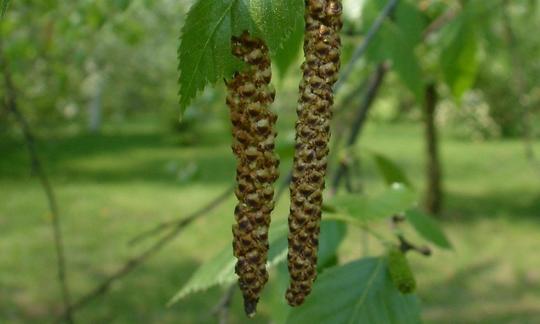

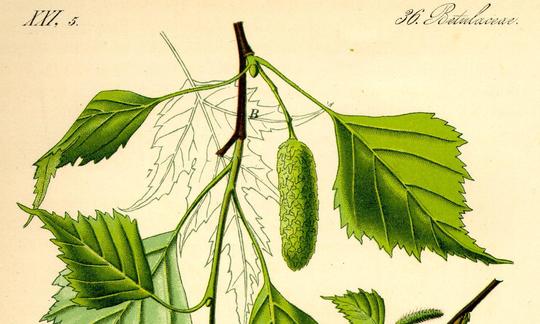

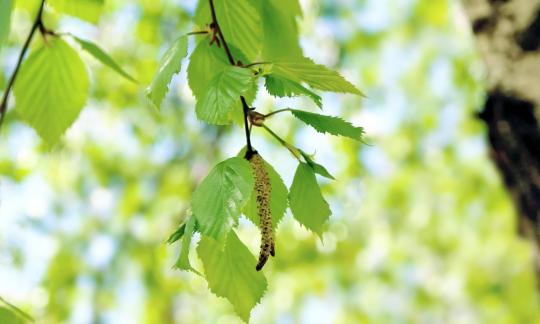

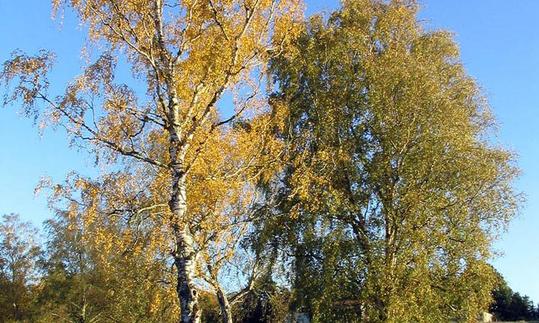

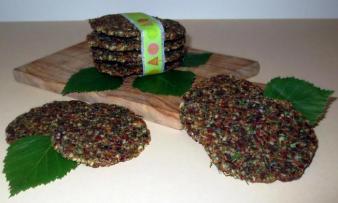


Comments